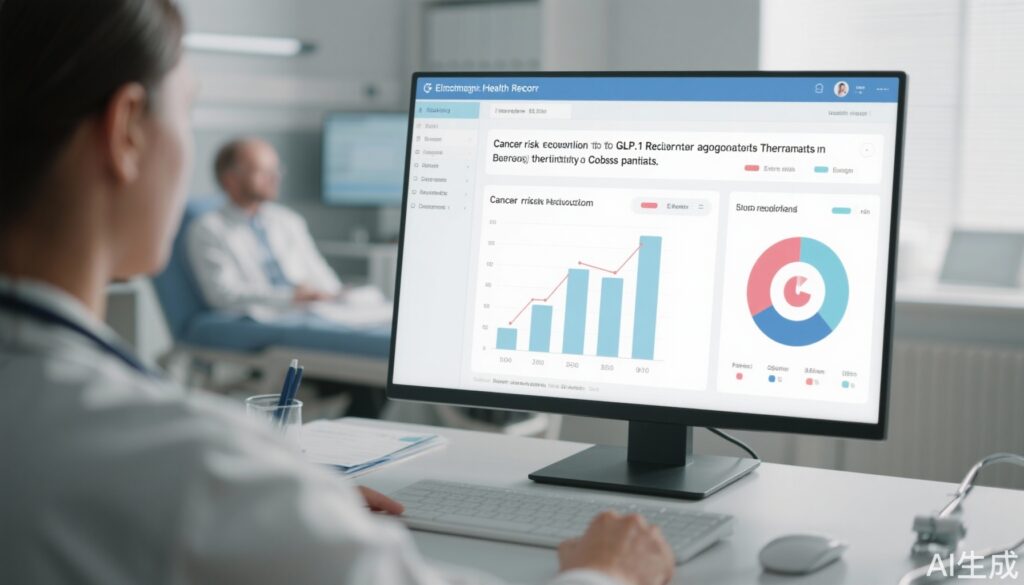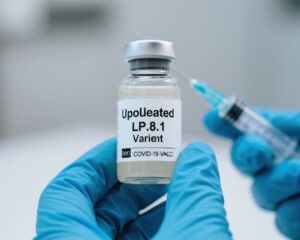Highlight
1. GLP-1 receptor agonists (RAs) are associated with a 17% reduction in overall cancer risk in adults with overweight or obesity.
2. Significant risk reductions occur for endometrial, ovarian, and meningioma cancers.
3. A potential increase in kidney cancer risk has been observed, particularly in younger individuals and those with overweight.
4. Limited but suggestive evidence indicates protective effects against gastrointestinal cancers in type 2 diabetes populations.
Study Background and Disease Burden
Obesity and overweight status continue to pose significant public health challenges worldwide, contributing to increased morbidity and mortality. One established complication linked to excess adiposity is an elevated risk of multiple cancer types, including endometrial, ovarian, breast, colorectal, and kidney cancers, among others. These cancers often show greater incidence and worse outcomes in individuals with higher body mass index (BMI).
Glucagon-like peptide-1 receptor agonists (GLP-1 RAs), initially developed for type 2 diabetes (T2D) management, have gained attention for their efficacy in promoting weight loss and improving metabolic parameters. Recent clinical trials and observational studies have explored the potential influence of GLP-1 RAs on cancer risk, motivated by their metabolic effects and proposed biological mechanisms involving hormone regulation and anti-inflammatory actions.
Despite growing use of GLP-1 RAs in populations with obesity, robust data on their long-term impact on cancer incidence remain limited, particularly outside the T2D population. This gap warrants rigorous investigation to inform clinical decision-making regarding the benefits and potential risks of GLP-1 RA therapy in obesity and overweight individuals.
Study Design
The primary study under discussion utilized a target trial emulation framework leveraging electronic health records of 20 million patients from 14 healthcare organizations in the United States. The cohort included 86,632 adults eligible for antiobesity medications, defined as those with obesity (BMI 30) or overweight (BMI 2719.9) with at least one weight-related comorbidity.
Among these, 43,317 individuals initiated GLP-1 RA therapy (liraglutide, semaglutide, or tirzepatide), while a matched cohort of 43,315 individuals did not receive GLP-1 RAs. Baseline characteristics included a mean age of 52.4 years, predominance of females (68.2%), racial distribution including 44.2% non-Hispanic White and 28.8% non-Hispanic Black individuals, and a mean BMI of 38.4. Approximately half (50.7%) had comorbid T2D.
The study endpoints focused on incidence rates of 14 cancer types: 13 classically obesity-associated cancers (meningioma, multiple myeloma, liver, thyroid, pancreatic, bladder, colorectal, kidney, breast, endometrial, upper gastrointestinal, ovarian, and prostate cancers) and lung cancer as a comparator.
Complementary studies investigated cancer risk among GLP-1 RA users in exclusively T2D populations, including retrospective cohort analyses and Medicare claims data, allowing comparison of GLP-1 RA users with users of other glucose-lowering medications.
Key Findings
The target trial emulation revealed that GLP-1 RA users exhibited a 17% lower overall cancer risk compared to nonusers (hazard ratio [HR], 0.83; P = .002) with incidence rates of 13.6 vs 16.4 per 1000 person-years, respectively. Notably, GLP-1 RA treatment was significantly associated with reduced risks for:
- Endometrial cancer (HR 0.75; P = .05)
- Ovarian cancer (HR 0.53; P = .04)
- Meningioma (HR 0.69; P = .05)
Tendencies toward decreased risks were observed for pancreatic, bladder, and breast cancers, although these did not achieve statistical significance.
Conversely, there was a trend toward increased kidney cancer risk among GLP-1 RA users (HR 1.38; 95% CI 0.991.93), particularly among individuals younger than 65 years and those with overweight rather than obesity. This finding aligns with other studies reporting increased kidney cancer risk in GLP-1 RA users, prompting caution and further investigation.
Secondary studies focusing on individuals with T2D showed GLP-1 RA use was strongly associated with reduced gastrointestinal cancer risks compared to other glucose-lowering agents, especially insulin (adjusted HR 0.29; 95% CI 0.23, 0.37). Other medications such as metformin and sulfonylureas were also associated with some risk reductions, but GLP-1 RAs demonstrated the most consistent and pronounced protective pattern.
However, analyses in older adults with T2D indicated no significant difference in overall cancer risk between GLP-1 RA and comparator drugs (SGLT2 inhibitors and DPP4 inhibitors), but identified a heightened risk of kidney cancer (HR 1.43) and endometrial cancer (HR 1.55) with GLP-1 RAs in certain subgroups.
Expert Commentary
The emerging evidence suggests a complex relationship between GLP-1 RA therapy and cancer risk modulation, likely influenced by patient characteristics, drug pharmacodynamics, and cancer-specific biology. The consistent finding of reduced risk of hormone-sensitive cancers such as endometrial and ovarian cancers supports a plausible mechanistic link involving metabolic improvements, insulin sensitivity, and modulation of sex hormone pathways.
Yet, the signal for increased kidney cancer risk remains concerning and biologically intriguing, warranting mechanistic studies and cautious clinical surveillance. Potential explanations may include changes in renal hemodynamics, cellular proliferation pathways, or immune effects induced by GLP-1 RAs, although these hypotheses remain speculative.
Limitations of available studies include the observational nature with inherent biases, potential confounding from indication and comorbidities, relatively short follow-up durations for cancer latency considerations, and variable patient adherence. Additionally, the distinction between the influence of weight loss per se and direct pharmacologic effects of GLP-1 RAs on cancer risk is unresolved.
Leading experts emphasize the need for tailored risk assessments in patients receiving GLP-1 RAs, especially those at high risk for kidney cancer or with prior malignancy history. Ongoing prospective studies and randomized controlled trials with extended follow-up are critical to validate these associations and clarify safety profiles.
Conclusion
GLP-1 receptor agonists demonstrate promising associations with reduced overall cancer risk in adults with overweight and obesity, notably lowering the incidence of hormone-sensitive cancers such as endometrial and ovarian cancer, and meningioma. These findings expand the therapeutic impact of GLP-1 RAs beyond glycemic control and weight management to potential cancer prevention.
However, the observed signals for increased kidney cancer risk underscore the necessity for vigilant surveillance and further mechanistic and epidemiological research to delineate risk-benefit profiles accurately. Clinicians should integrate cancer risk considerations into individualized treatment plans when initiating GLP-1 RA therapy in high-risk populations.
Ultimately, these data highlight the importance of continued rigorous evaluation of the long-term oncologic safety and benefits of GLP-1 receptor agonists as their use becomes more widespread in obesity management.
References
1. Dai H, Li Y, Lee YA, et al. GLP-1 Receptor Agonists and Cancer Risk in Adults With Obesity. JAMA Oncol. 2025 Aug 21:e252681. doi: 10.1001/jamaoncol.2025.2681 IF: 20.1 Q1 .
2. Kuo CC, Chuang MH, Li CH, et al. Glucagon-like peptide-1 receptor agonists and gastrointestinal cancer risk in individuals with type 2 diabetes. Diabetologia. 2025 Sep;68(9):1924-1936. doi: 10.1007/s00125-025-06453-z IF: 10.2 Q1 .
3. Lu Y, Dai H, Tang H, et al. Association of Glucagon-Like Peptide-1 Receptor Agonists With Cancer Risk in Older Adults With Type 2 Diabetes. Obesity (Silver Spring). 2025 Aug 21. doi: 10.1002/oby.24366 IF: 4.7 Q1 .


